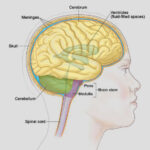Now that the Kuether Brain and Spine team is able to perform elective procedures for the Portland metro community again, we’re exploring common surgeries performed by our staff.
Carpal tunnel or median nerve compression is relatively common, especially as people do repetitive motions while using electronics such as our cell phones, laptops and computer mouses more than ever before.
If carpal tunnel symptoms become severe enough, surgery can be performed to help relieve symptoms like chronic pain in the hand and arm as well as numbness or tingling.
However, do you know what the second most common entrapment nerve pain is in the the upper body? It’s ulnar nerve entrapment.
Ulnar nerve entrapment is the compression or irritation of the ulnar nerve, which runs up the entire length of the arm.
The ulnar nerve is one of the three main nerves in the arm traveling from the neck to the hand. It can be constricted in several places along the way, such as beneath the collarbone or at the wrist.
Compression and irritation of this nerve commonly occurs between the wrist and elbow in the forearm or between the elbow and shoulder in the upper arm.
If you’re suffering from ulnar nerve entrapment, you may experience some of the following symptoms:
- intermittent numbness and tingling in the ring and pinkie fingers
- a weak grip in the affected hand
- a feeling of the pinkie and ring fingers “falling asleep”
- difficulty controlling fingers for precise tasks, such as typing or playing an instrument
- sensitivity to cold temperatures
- pain or tenderness in the elbow joint, especially along the inner aspect
- in severe cases, a person can lose muscle and feel numbness
Ulnar nerve entrapment is frequently caused by: leaning on the elbow for an extended period, the nerve slipping out of place when the elbow is bent, fluid buildup in the elbow, current or previous injury to the inside of the elbow, bone spurs, swelling or arthritis of arm joints or a repetitive bending/straightening of the joints that causes irritation.
It is time to see a doctor if a patient experience a combination of the symptoms listed above for an extended period of time such as a week or longer.
A doctor will typically diagnose ulnar nerve entrapment by examining a patient’s nerves through a physical examination or through a nerve conduction studies, in which small needles are inserted into the muscles surrounding the ulnar nerve to see how the muscle and nerves are functioning.
Depending on the patient’s situation, a doctor may also take an X-ray to check for current or previous injuries.
Depending on the severity of the entrapment, the following treatment may be prescribed: use of anti-inflammatory prescriptions, a joint brace to prevent more bending, physical therapy or in the most extreme cases, a surgical procedure will be selected.
In terms of surgical operations, ulnar nerve entrapment can be treated through three options:
- Cubital tunnel release: “A procedure to increase the size of the cubital tunnel to give the nerve more room.”
- Ulnar nerve anterior transposition: “A procedure to move the nerve from behind the muscle to in front of it, so there is less tension on the nerve when the elbow is bent.”
- Medial epicondylectomy: A procedure that removes part of the protruding medial bone to prevent the nerve from rubbing on this area.
The staff at Kuether Brain & Spine are happy to help patients who are suffering from the most severe cases of ulnar nerve entrapment as well as carpal tunnel in their wrists or hands. Dr. Kuether typically performs endoscopic carpal tunnel surgery for quicker recovery and a smaller incision.










